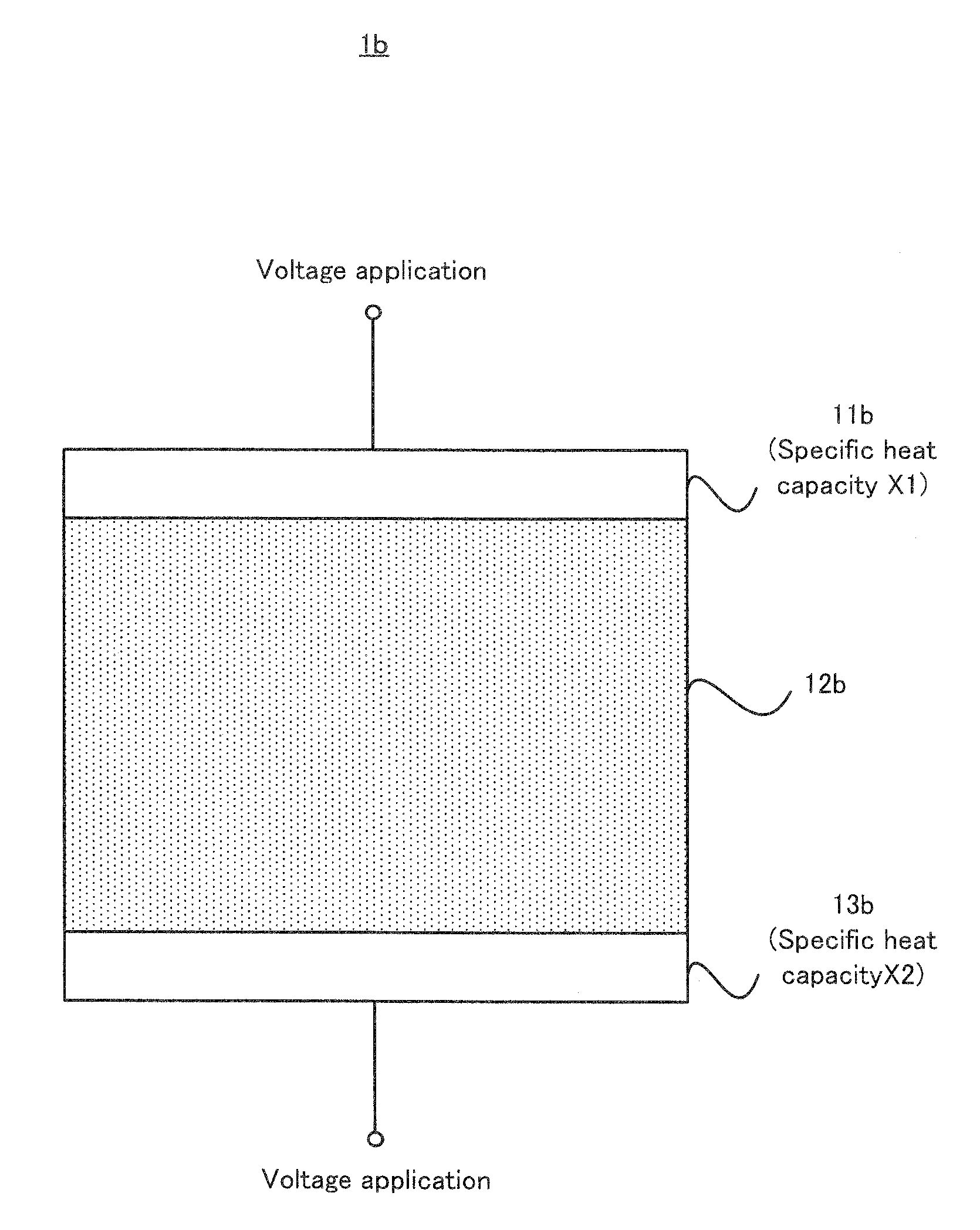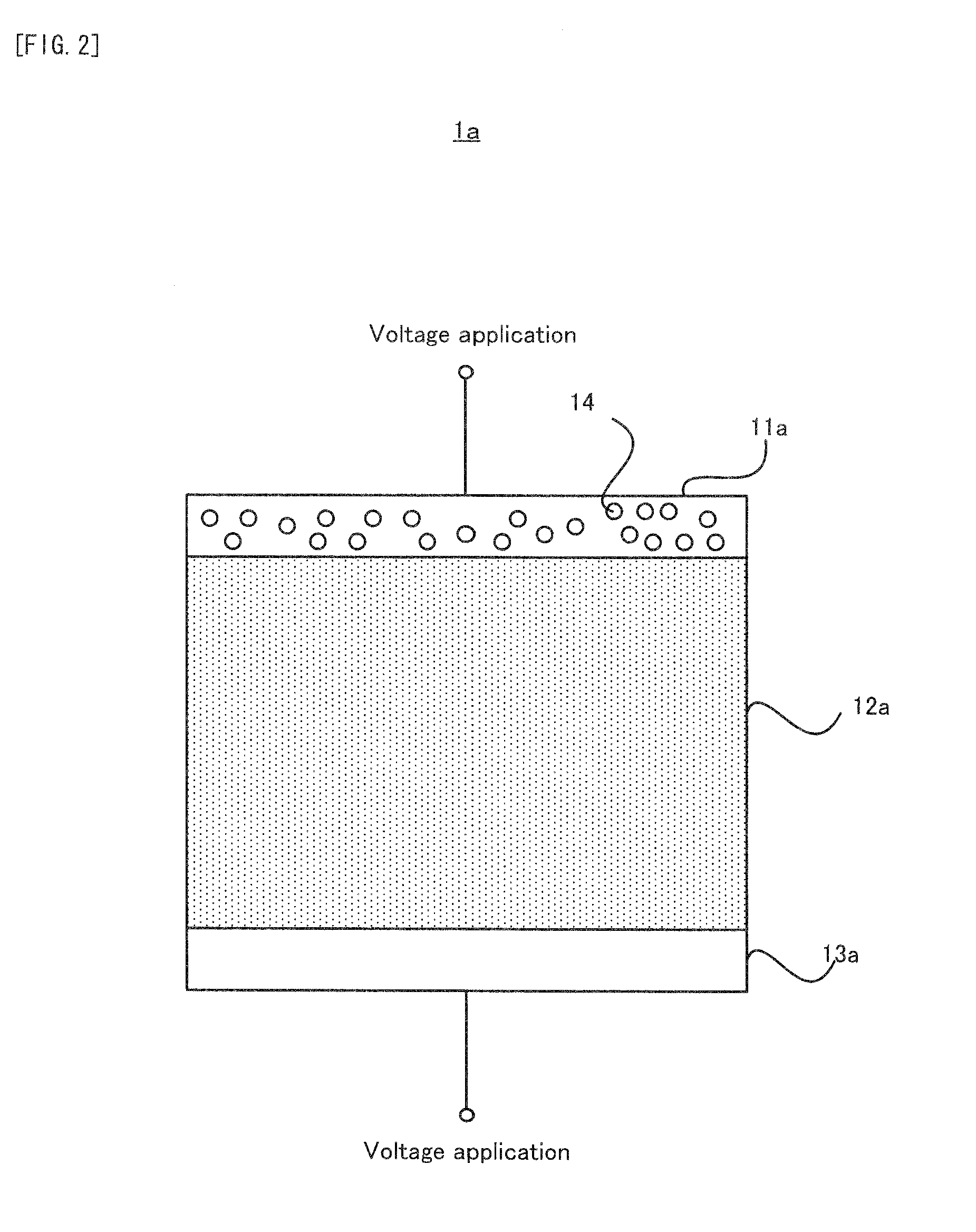Thermal sound generating device
a generation device and sound technology, applied in the direction of transducer details, instruments, electrical transducers, etc., can solve the problems of significantly reducing the generation efficiency of acoustic waves, hardly being able to completely eliminate a frequency component which is different from that of input signals, and output of input signals. , to achieve the effect of preventing the generation of joule hea
- Summary
- Abstract
- Description
- Claims
- Application Information
AI Technical Summary
Benefits of technology
Problems solved by technology
Method used
Image
Examples
examples
[0067]Hereinafter, examples of the present invention will be explained with reference to the drawings.
(1) Basic Structure
[0068]Firstly, with reference to FIG. 1, an explanation will be given on an example of the thermoacoustic generating apparatus of the present invention. FIG. 1 is a cross sectional view conceptually showing a first basic structure of a thermoacoustic generating apparatus 1 in an example.
[0069]As shown in FIG. 1, the thermoacoustic generating apparatus 1 in the example is provided with an upper electrode 11, which constitutes one specific example of the “first electrode layer” of the present invention; a thermoelement 12, which constitutes one specific example of the “thermoelement layer” of the present invention; and a lower electrode 13, which constitutes one specific example of the “second electrode layer” of the present invention.
[0070]The upper electrode 11 is, for example, an electrode made of metal or the like with a film thickness of d1. More specifically, ...
first modified example
(2) First Modified Example
[0095]Next, with reference to FIG. 6 and FIG. 7, an explanation will be given on a first modified example of the thermoacoustic generating apparatus in the example. FIG. 6 is a perspective view conceptually showing a first basic structure of a thermoacoustic generating apparatus in the first modified example. FIG. 7 is a perspective view conceptually showing a second structure of the thermoacoustic generating apparatus in the first modified example.
[0096]As shown in FIG. 5, a thermoacoustic generating apparatus 100 in the first modified example is provided with a plurality of thermoacoustic generating units 10. Each of the plurality of thermoacoustic generating units 10 has substantially the same structure as those of the thermoacoustic generating apparatuses 1 shown in FIG. 1 to FIG. 4 and is provided with the upper electrode 11, the thermoelement 12, and the lower electrode 13.
[0097]In the thermoacoustic generating apparatus 100 in the first modified exam...
second modified example
(3) Second Modified Example
[0107]Next, with reference to FIG. 8 and FIG. 9, an explanation will be given on a second modified example of the thermoacoustic generating apparatus in the example. FIG. 8 is a perspective view conceptually showing a first basic structure of a thermoacoustic generating apparatus in the second modified example. FIG. 9 is a perspective view conceptually showing a second structure of the thermoacoustic generating apparatus in the second modified example.
[0108]As shown in FIG. 8, a thermoacoustic generating apparatus 102 in the second modified example is provided with the plurality of thermoacoustic generating units 10, as in the thermoacoustic generating apparatus 100 in the first modified example.
[0109]In the thermoacoustic generating apparatus 102 in the second modified example, only the p-type thermoelements 12-1 are used as the thermoelements 12. The plurality of p-type thermoacoustic generating units 10 are connected electrically in series to match the ...
PUM
 Login to View More
Login to View More Abstract
Description
Claims
Application Information
 Login to View More
Login to View More - R&D
- Intellectual Property
- Life Sciences
- Materials
- Tech Scout
- Unparalleled Data Quality
- Higher Quality Content
- 60% Fewer Hallucinations
Browse by: Latest US Patents, China's latest patents, Technical Efficacy Thesaurus, Application Domain, Technology Topic, Popular Technical Reports.
© 2025 PatSnap. All rights reserved.Legal|Privacy policy|Modern Slavery Act Transparency Statement|Sitemap|About US| Contact US: help@patsnap.com



